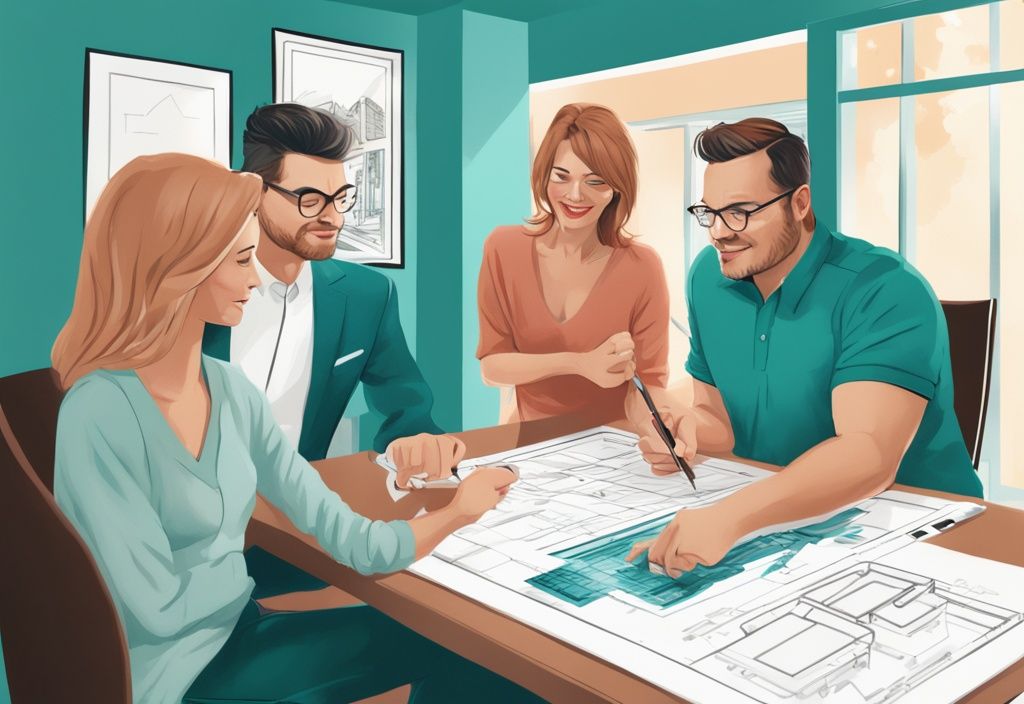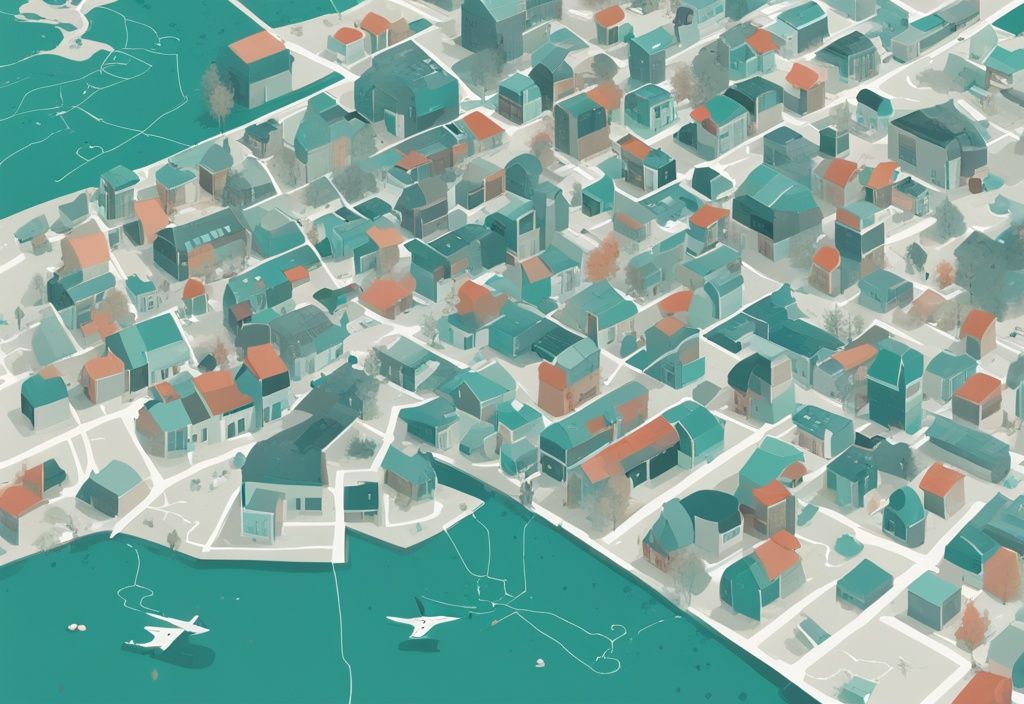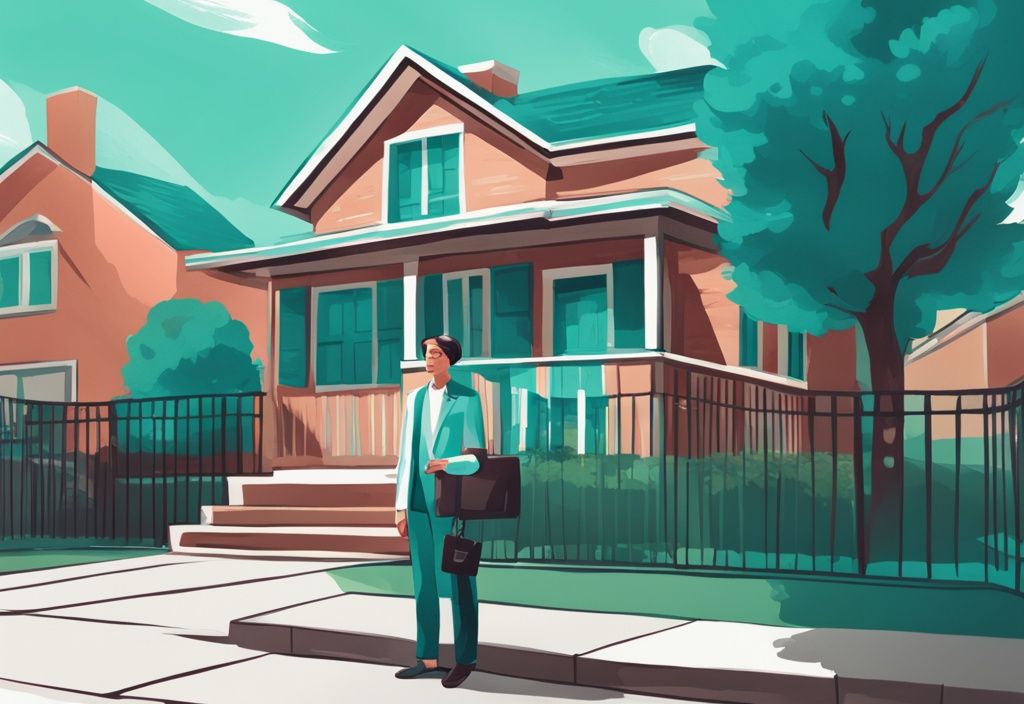Ever wondered how real estate experts predict the value of a property after renovation? Say hello to ARV or After Repair Value. As a seasoned investor, I can tell you this: mastering the concept of ARV is as indispensable as your toolbox. It’s not just about ensuring you don’t overpay for a fixer-upper; it’s about nailing potential profits and weathering financial storms.
In this article, we’ll untangle the ARV web, from how it’s calculated to why it’s your secret weapon in property investment. You’ll discover how accuracy in ARV estimations can sharpen your decision making and shape your investment strategies, leading to profitable outcomes.
Think of this as your roadmap to ARV mastery, empowering you to confidently navigate the landscape of real estate investments. So, are you ready to gain insights and amplify your investment wisdom? Come on in, let’s get started!
Unraveling the Concept of ARV in Real Estate
Definition and Importance of ARV in Property Investment
ARV, or After Repair Value, is a crucial concept in real estate, representing the estimated value of a property after it has undergone necessary repairs, renovations, and improvements. Unlike the current market value, which reflects the property’s worth in its present state, ARV provides a future valuation post-upgrade.
Understanding ARV is vital for numerous reasons. For property investors, particularly those involved in property flipping, ARV serves as a cornerstone for assessing the investment potential of a property. Knowing the ARV helps investors ensure they do not overpay for a property initially, which can safeguard against financial pitfalls and promote profitable investment outcomes.
One of the primary benefits of accurately calculating ARV is the significant reduction in financial risks. Proper assessment of ARV allows investors to create a realistic budget for repairs and improvements, making certain that the total investment remains within a profitable range. This comprehensive understanding helps maintain control over expenditures and fosters informed decision-making, which is paramount in the volatile real estate market.
Additionally, ARV is critical when it comes to securing financing for property investments. Lenders often use the ARV to determine the potential loan amount they are willing to offer. A well-calculated ARV can thus enhance the likelihood of obtaining favorable financing options and terms.
In essence, mastering the concept of ARV in real estate is not just about knowing a property’s potential value; it’s about leveraging this knowledge to make smarter, more profitable investment decisions. By accurately estimating the ARV, investors can unlock better opportunities, minimize excess spending, and ultimately increase their chances of success in the property market.
Getting to Grips with ARV Calculation
Understanding how to calculate ARV is a critical skill for any real estate enthusiast. Here, you’ll find the key steps walking you through the process of determining the After Repair Value (ARV) of a property.
Key Steps to Calculate ARV Accurately
Estimating Current Property Value
Before diving into what is ARV in real estate, it’s crucial to nail down the current value of the property. Think of this as your starting point, or your property’s “as-is” value. Engaging a professional appraiser is essential for getting a precise valuation. Key factors include the property’s size, land area, number of bedrooms and bathrooms, curb appeal, unique amenities, and overall condition. This baseline value forms the foundation for calculating the After Repair Value (ARV).
Determining Repairs and Renovations Costs
Once you have an accurate current property value, the next step involves estimating the costs for repairs and renovations. This step is multi-faceted. Start by listing all the planned improvements, both cosmetic and structural. To get a precise estimate, obtain bids from various contractors. And don’t forget about holding costs like utilities, property taxes, and insurance, which can add up during the renovation period. Incorporating these costs is crucial for an accurate ARV calculation.
Using Comparable Properties (Comps)
Now comes the fun part—finding comparable properties, or “comps.” These are properties in nearby areas that have recently sold and are in similar condition to what your property will be post-renovation. Real estate agents use the Multiple Listing Service (MLS) to find these comps and conduct a comparative market analysis. Comps provide a data-driven estimate of your property’s potential post-renovation selling price, making your ARV calculation as accurate as possible.
The Critical Role of ARV in Real Estate Investment Strategies
Understanding what ARV in real estate means is pivotal to making sound investment decisions. ARV, which stands for After Repair Value, is a key metric used by investors to estimate the future value of a property post-renovation. This predictive value serves as a cornerstone in various investment strategies, ensuring investors can assess potential profits and risks efficiently.
ARV in the Fix and Flip Strategy
The term ARV really shines in the fix-and-flip strategy. Imagine buying a rundown property with the hopes of transforming it into a gem and then selling it for a profit. Here is where knowing what ARV in real estate means becomes a game-changer. It allows investors to predict the post-renovation value, helping you figure out whether the venture will pay off.

Investors use ARV to calculate how much they’re willing to sink into repairs and improvements. It’s not just about the buying price; you’ve got to factor in the total repair and holding costs to make sure the profits justify the expenses. Having a solid ARV gives you a clear revenue target and helps minimize financial risks. To put it simply, it helps you decide if the fix-and-flip endeavor is worth it, making you a savvy and confident investor.
ARV and the Buy-and-Hold Strategy
The concept of ARV is just as crucial in the buy-and-hold strategy, particularly in the commercial real estate (CRE) realm. Here, investors go for properties they can improve to boost rental income. Understanding what ARV in real estate involves is essential for making informed decisions about which properties to acquire and renovate.
Think about it this way: the potential value increase from improvements, which reflects in the ARV, directly influences future rental income. A higher ARV means you can fetch better rental rates, thus getting a better return on investment. ARV isn’t just a number; it’s your guiding star for planning renovations that maximize long-term gains, setting you up for success in your buy-and-hold strategy.
Biting Into the 70% Rule in ARV
Applying the 70% Rule in Property Investment
The 70% Rule is a fundamental guideline in real estate investing and a crucial aspect of understanding what is ARV in real estate. It provides investors with a formula to calculate how much they should pay for a property to ensure a profitable investment. The formula is:
Formula: (ARV x 70%) – Estimated Repairs = Maximum Purchase Target
This rule helps investors determine the upper limit they should bid on a property. The calculation ensures that the purchase price does not exceed 70% of the ARV (After Repair Value) minus the estimated repair costs. By adhering to this formula, investors can aim for a 30% return on investment (ROI), which accounts for unforeseen expenses and potential market fluctuations.
The 70% Rule is particularly valuable because it integrates the future value of the property (ARV) post-repair into the buying decision. This consideration mitigates risks associated with overpaying for a property, thus safeguarding profit margins. For those navigating the complexities of buying and selling properties, a real estate transaction coordinator can streamline the process and ensure all details are managed efficiently. For those interested in property flipping, adopting this rule is instrumental in maintaining financial discipline and ensuring that investment strategies remain robust and profitable.
Beyond just providing a financial safety net, the application of the 70% Rule in the context of what is ARV in real estate encourages a meticulous approach to both property selection and renovation planning. Investors must accurately estimate repair costs and anticipated ARVs to leverage this rule effectively, resulting in more informed and data-driven property investments.
Optimize the content with the following guidelines:
1. The content should be written by a fictional persona, to make it sound humanized. Adapt the writing style to match the persona’s perspective and make the content sound human-like: Alex Harper is a seasoned real estate expert with over a decade of experience, blending her professional know-how with a down-to-earth, friendly approach. Her writing style is warm, engaging, and conversational, peppered with real-world examples that simplify complex real estate issues. Alex’s tone is reassuring and relatable, making readers feel empowered and informed, as though they’re getting advice from a trusted friend. She frequently uses analogies and relatable scenarios to demystify intricate topics, ensuring her insights are both actionable and easy to grasp. Her unique ability to infuse personality and warmth into her writing makes the information accessible and enjoyable, encouraging exploration and confidence in her readers. Alex’s unique, empathetic viewpoint on real estate focuses on practical solutions and simplifying the often daunting aspects of property management, making her a true guide and ally for her audience.
2. Ensure that new paragraphs are being used regularly, so the content is easier to read.
3. Ensure heterogeneous sentence length.
4. In case an H2 has no content: Provide the H2 heading with content which introduces what is being covered in its subheadings. Do not greet the reader or talk about yourself in the H2 introduction.
5. Use “Du” instead of “Sie” when talking to the reader
7. Use HTML format for all content creation like for example:
,
- ,
- , etc.

8. Only optimize the Content, do not change anything else. Do not add “Optimized Content:” in front of the optimized content.
9. Do not greet the reader or introduce yourselfThe Influence of ARV on Getting Financing
Understanding what ARV (After Repair Value) means in real estate is crucial if you’re looking to get the right financing for your property endeavors.
How ARV Affects Loan Amounts
To put it simply, knowing the ARV of a property can significantly impact how much you can borrow. Lenders, like Rehab Financial, usually use the ARV to decide on the maximum loan amount they’re willing to offer.
Here’s a quick bit of real estate math for you:
After Repair Value x 70% = Maximum Loan Amount
Let’s break this down. Imagine you have a property with an ARV of $250,000. Using the 70% rule, the most you could likely borrow would be $175,000.
This rule is set up to protect lenders while still giving you, the real estate investor or homeowner, the funds needed to bring a property up to its after-repair glory. It’s a sort of safety net for everyone involved.
But here’s where it gets a bit varied. When you deal with private or hard money lenders, they often might cap their loan offerings at 65% of the ARV, considering the higher risks associated with renovation projects.
In a nutshell, if private lenders see a property with an ARV of $250,000, you might only get $162,500 from them.
This is why it’s incredibly important to have a strong renovation plan and a precise ARV estimate. It helps you not only secure better financing but also ensures that your investment remains profitable.
So, always aim for accuracy in your ARV calculations and be ready to provide a clear, detailed renovation strategy to any potential lender. This proactive approach can save you from unnecessary headaches and keep your real estate ventures on the path to success.
ARV Estimation: Key Best Practices for Accuracy
Why Reliable Comps are Essential
Comparable properties, often called “comps,” are really important for getting the ARV (After Repair Value) in real estate right. Think of comps as the unsung heroes that provide a realistic benchmark of what similar homes in the neighborhood have sold for. This helps in forecasting the potential market value of your property after renovations.
Why are reliable comps so crucial? They reflect the most recent sales data, capturing any market changes that might impact property values. Using well-matched comps ensures you’re making informed decisions, steering clear of the pitfalls that come with inaccurate valuations.
To nail down the best comps, real estate pros often turn to the Multiple Listing Service (MLS). They sift through properties that resemble the one you’re working on—looking at size, number of bedrooms and bathrooms, and overall condition. It’s key to pick comps that match what you expect your property to look like post-renovation. This approach grounds your ARV estimate in reality, giving you a trustworthy figure to assess investment potential.
Significance of Accurate Repair Cost Estimation
Getting those repair costs right is another linchpin when using the ARV formula in real estate. Underestimate these, and you might end up with an ARV that doesn’t pan out profitably. Therefore, it’s crucial to meticulously evaluate every aspect of the required repairs and renovations.
This includes cosmetic updates like painting and landscaping, as well as significant structural improvements such as roofing and plumbing. On top of that, don’t forget to factor in holding costs—expenses like property taxes, insurance, and loan interest during the renovation period.

To ensure repair estimates are spot-on, work with experienced contractors and get multiple bids for the planned work. This comprehensive approach helps create a realistic budget, allowing you to assess the true potential of your investment with fewer financial surprises. Accurate repair cost estimation not only protects your profitability but also enriches your overall investment strategy by shedding light on all possible expenses related to the property.Navigating Challenges in ARV Calculation
Determining the After Repair Value (ARV) of a property involves several facets that can present unique challenges. Let’s dive into how overestimating property value and underestimating repair costs can affect ARV calculations.
How Overestimation of Property Value Affects ARV
Grasping what is ARV in real estate is imperative for investors. Equally crucial is nailing down an accurate ARV calculation. Overestimating the property’s value post-repair can throw a wrench in your financial plans. Say you assume a higher ARV than what’s realistically attainable. You might end up paying more for the property, banking on bigger returns. This inflated expectation can lead to overpaying, shrinking profit margins or even nosediving into the red. Plus, an overblown ARV skews future investment choices, potentially leading to unforeseen financial losses when you decide to sell.
Reality of Underestimation of Repair Costs and its Impact on ARV
Knowing what is ARV in real estate also means getting a handle on repair expenses. If you lowball these costs, your ARV calculation ends up off-kilter, misaligning the entire project budget. Imagine hitting a substantial budget shortfall midway, stalling your project, and possibly derailing its completion. Skipping or undervaluing vital repairs can inflate hidden costs later, slicing into your overall profitability. Accurately projecting repair costs leads to a realistic ARV, fostering a balanced financial plan that supports sustainable investment strategies.
Wrap Up on ARV in Real Estate
Understanding what is ARV in real estate is crucial for any investor looking to maximize their returns. ARV, or After Repair Value, serves as a critical benchmark for estimating potential profit in real estate investments, especially in fix-and-flip strategies. By accurately calculating the ARV, investors can set a realistic budget for property acquisition and necessary improvements, optimizing their investments effectively.
Determining an accurate ARV isn’t just about crunching numbers; it involves a thorough analysis of comparable properties, professional appraisals, and meticulous estimation of repair costs. These elements ensure that the post-repair value is realistic and aligns with current market conditions. Consulting with real estate professionals can further refine these estimates, providing insights based on market trends and property specifics.
While ARV is an invaluable metric, it should not be the sole tool in an investor’s decision-making arsenal. Combining ARV with other financial metrics and investment strategies offers a holistic view of the property’s potential. This approach not only helps mitigate financial risks but also aids in making well-informed investment decisions.
Successfully leveraging ARV can significantly impact the execution of real estate strategies. Whether fixing and flipping homes for a quick turnover or holding onto properties to capitalize on rental income, prioritizing accurate ARV calculations and combining them with other investment tools can enhance the likelihood of achieving profitable and sustainable returns in the dynamic real estate market.
In summary, mastering what is ARV in real estate equips investors with the knowledge and confidence to undertake various real estate ventures effectively. It remains an indispensable component in evaluating and optimizing the potential returns from property investments.
FAQ
What exactly does ARV stand for in real estate?
– ARV, or After Repair Value, is a key term in real estate, especially when dealing with renovations. It estimates what a property’s value will be after all the necessary repairs and upgrades are completed. Think of it as the “future perfect” value of a home—how much it could sell for once it’s all fixed up. This figure is essential for investors to gauge potential profits and make informed decisions about purchasing and renovating properties.
How is ARV different from current market value?
– The difference between ARV and current market value is all about timing and conditions. The current market value represents what the property is worth right now, in its current state, no matter how many leaky faucets or outdated tiles it might have. Meanwhile, ARV is a forward-looking estimate. It’s the anticipated worth after you’ve invested time and money into necessary repairs and upgrades. Think of the current market value as the “as-is” price and ARV as the “will be” price.
Why is ARV particularly important for property flippers?
– For property flippers, ARV isn’t just a number; it’s a critical tool for success. It helps them figure out the maximum price they should pay for a property to ensure a profitable flip. By estimating the ARV, flippers can project their return on investment (ROI), assess the viability of a potential project, and most importantly, avoid overpaying. Without a clear ARV, they might end up in the red, sinking money into a project that won’t pay off.

Hi, I’m Alex Harper, a real estate expert with over ten years of experience in property management and legal advice. My passion is making the often complicated world of real estate understandable. I share practical tips and simple solutions to help you make better decisions – whether you’re buying a home, renting or just want to learn more about the industry. With my knowledge and experience, I want you to feel well-informed and confident in your real estate projects. Let’s tackle this together!




